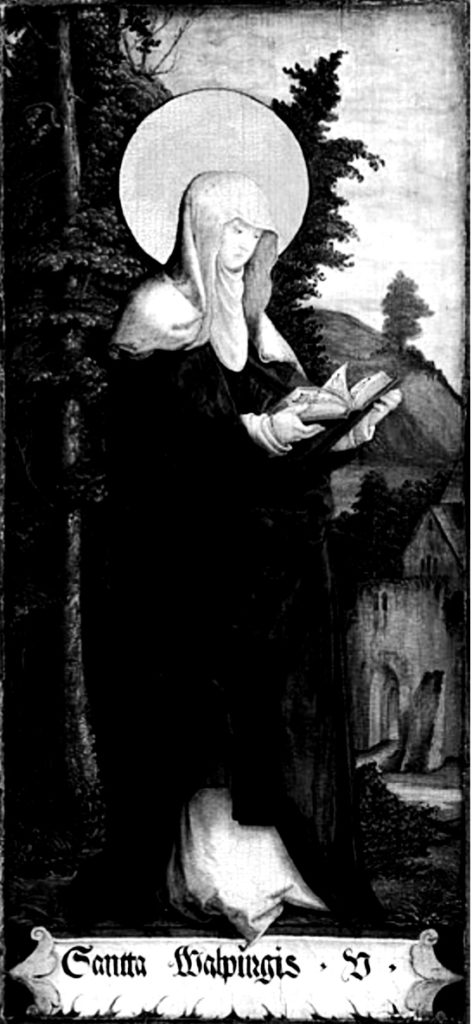
Walpurgisnacht was named so after a Christian missionary St Walpurga (latin; Valpurga, Walpurga, or Walpurgis,) who was canonised on May Day 870 by Pope Adrian II. St Walpurga was born in Devonshire England to an aristocratic family and was the daughter of Richard the Pilgrim, and underking of the West Saxons and the Wuna of Wessex.
Walpurga’s father left her to reign as abbess of a double monastery at Wimborne Abbey at just 11 years old as he took himself on a pilgrimage to Rome, where he died after just one year. Walpurga spent the next couple of decades being educated in the matters of Christianity before taking flight (or possibly boat in those days,) to the Frankish Empire to be part of an effort to infect the German people’s ancestors with (cough,) I mean in order to spread the glorious word of Christianity.

Walpurgis feast day is on the 25th of February and was celebrated during the Middle Ages, but the eve of May day was also celebrated after her canonisation and it is this day that has stood the test of time. True Sabbats remain in folk memory no matter the name that clouds them.
The early phases of political Christianity did their best to squeeze themselves into customs that already existed, they also brought fear to the dates that celebrated the connections to the Earth and the Ancestors, the world soul inverts every now and again and this was one of those times, instead of celebrating the souls connection, the Christians used Walpurgisnacht to pray to their Saint that no magik, God, or ghost would enter their worlds on the eve of this day when the veil is thin.
Yet, even with a little cognitive dissidence the public could not shake what they knew in their bones, and it is in Walpurge’s bones they sought solace. The early catholics collected the oil that was created from water running through them from a rock in which her bones were placed to anoint the sick with cures for their disease – a few miracles came about this way. Today her bones reside in an abbey in Bavaria and you can still purchase her bone oil today from various charlatans if that sort of thing tickles your fancy.
The central focus for Walpurgisnacht energy is placed on the Brokan mountain, the highest peak of the Harz Mountains in which an old God and new Devil Wotan cavorted with his Goddess Frigg. Despite Walpurga’s efforts the old ways continued openly until the 16th century when the wise were culled in their thousands and the true celebration of the eve of the May Day Gods were oppressed.
Occasionally Walpurgisnacht is referred to as Hexenbrunnen (the burning of the witches according to one source,) as a reflection of this horrific past. (Hexe = witch, Brunnen = well, possibly relating to the Hebrew tophet in which sacrifices and heretics to Yah, and previously Moloch were ritually burnt by followers of the Abrahamic faiths.)
I am more inclined to ponder if Hexenbrunnen would not more likely refer to original celebration of Wotan’s awakening through the rites of the chalice with his bride all those moons ago on that sacred mountain top. One thing is for sure, the Mistress 13 does not celebrate Walpurga on this night.

